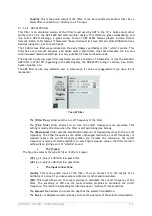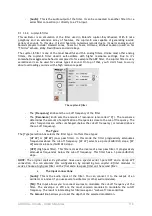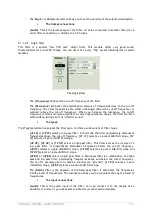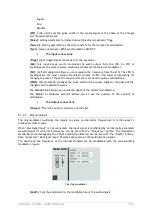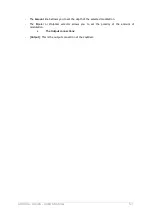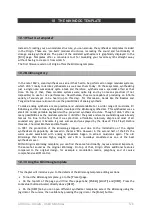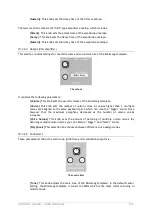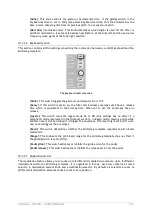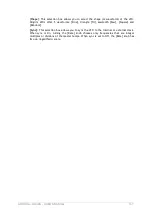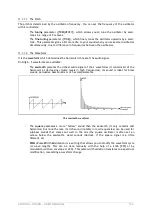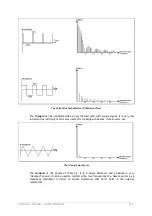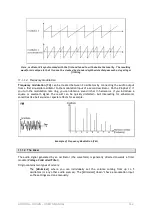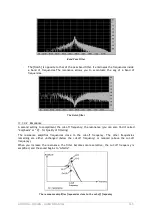
ARTURIA – ORIGIN – USER’S MANUAL
130
-
Mixer
-
2 ADS(R) envelopes
-
VCA
(amplifier)
The Minimoog template uses a quite classic subtractive synthesis structure graphically displayed
below:
Three independent oscillators provide the main sound source for the Minimoog template. Their
waveform and pitch can be set independently from the other oscillators. Oscillator 3 can also be
used to modulate the frequency of the other oscillators, or even the filter cut-off frequency.
The audio signals from the three oscillators are sent to the mixer where their individual volumes
can be set. The mixer also provides volume controls for the noise generator and the external input.
The mix of all audio sources is then sent to the filter, which has its own dedicated envelope. After
the filter, the signal is amplified in the VCA module, again with its dedicated envelope.
The mix of oscillator 3 and the noise generator can also be used as a modulation signal. The mix
between these two signals can be set with the [Mod. Mix] knob and the amount of modulation is
controlled by the modulation wheel. The modulation of the filter and oscillators can be
independently switched On and Off.
The external LFO which is added to the original Minimoog structure can be routed to virtually any
destination within the Minimoog template using the modulation matrix. The modulation matrix also
allows using other sources as modulators, for example the filter envelope or the aftertouch.
The FX mixer on the [Program] page and the [FX] page work with the Minimoog template in the
same way as any other program. This means that you can freely use Origin’s built in effect in
combination with the Minimoog template. The Minimoog template uses VCA 1.
10.3.2
The interface
To view the interface of the Minimoog template, go to the [Edit] page. The [Edit] page shows the
main interface which is a graphic representation of the original Minimoog. This main interface shows
the following screen sections:
-
Modulation matrix
-
LFO
-
Controls
-
Oscillator bank
-
Mixer

